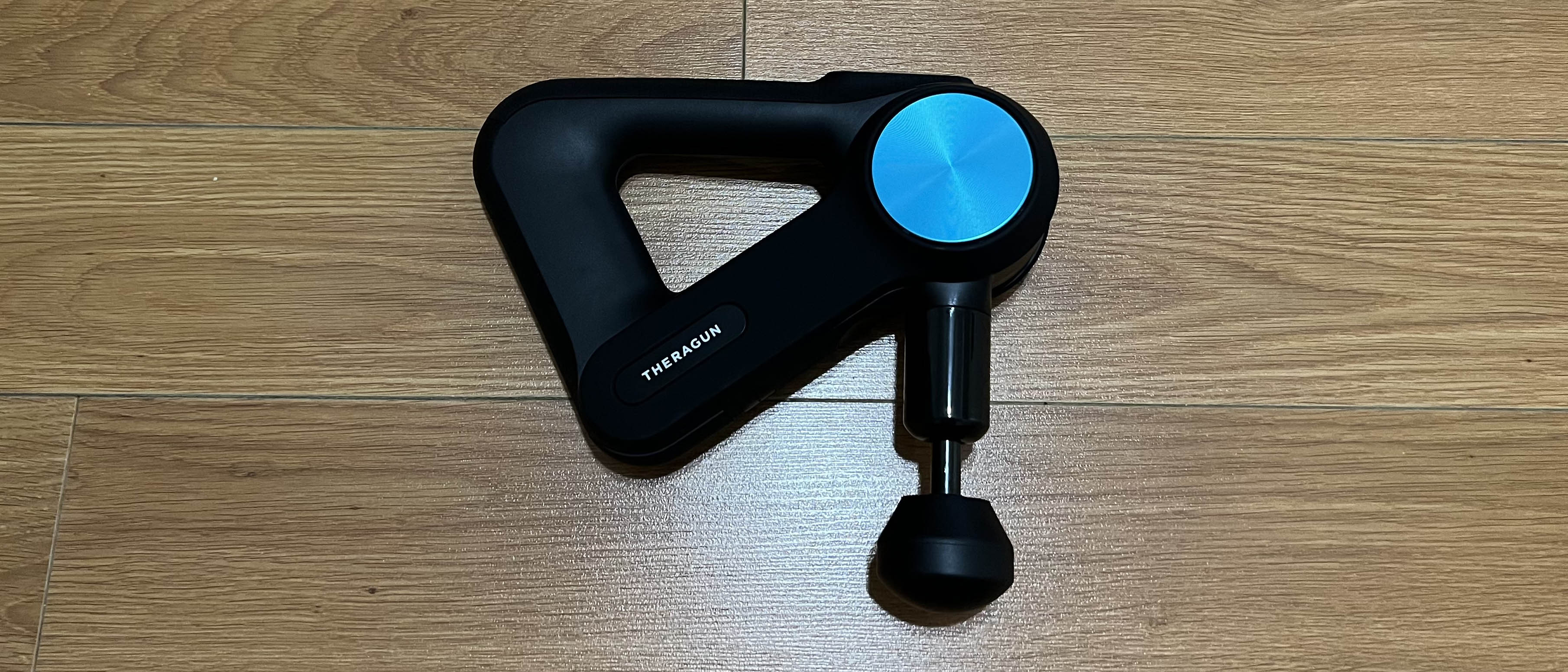Tom's Guide Verdict
The Theragun Pro is best suited for professional and recreational athletes, or at the very least, those with a physically demanding profession.
Pros
- +
60 pound stall force threshold
- +
Long amplitude
- +
Closed and open cell foam attachments
- +
Seemingly endless battery life
Cons
- -
Prohibitivly expensive
- -
Loud
Why you can trust Tom's Guide
For athletes, weekend warriors, and even desk jockeys, massage guns like the Theragun Pro have become instrumental in keeping bodies mobile and injury-free. Instead of having to awkwardly position yourself on a foam roller (or worse - figure out how to fit one in your carry-on luggage), the best massage guns provide a more portable and efficient way of releasing tight muscles and restricted joints. Power one on, and the percussive motion from the gun and its attachments penetrate into tissues, promoting blood flow and working out painful knots.
Dimensions: 10 in x 7.1 in x 3 in
Weight: 2.9 pounds
PPM range: 1750-2400 (5 pre-programed speeds, full range with use of the Therabody App)
Amplitude: 16mm
Attachments: 6
Noise level: 60-77 decibels
Battery life: 5 hours total, 150 minutes per lithium ion battery (2 included)
Battery charge time: 75 minutes
But unlike reasonably affordable foam rollers, massage guns can get pricey — in most instances, you’ll pay at least $100 for one. The Theragun Pro costs six times that amount, coming in as one of the most expensive guns on the market. But would it be a worthwhile investment to maintain a healthy body? Read our full Theragun Pro review below.
Theragun Pro Review: Price and Availability
The Theragun Pro is the highest of high-end massage guns — retailing at $599, it is the priciest on our best massage guns list by a considerable amount. For comparison, second place is a tie between the Theragun Elite and the Hyperice Hypervolt 2 Pro (both $399). With the difference in cost, you could buy two Legiral Le3 Massage Guns.
Theragun doesn’t run sales very often, but you may find that one or two pop up throughout the year (like Black Friday). Even with a rare discount, you should still expect to pay a hefty sum for the Pro. Trying to find a better deal at another retailer will most likely end in defeat, as the Pro’s pricing remains consistent pretty much everywhere.
In addition to their standard model, a Product(RED) version of the Theragun Pro is also available.
Theragun Pro Review: Design
It’s easy to tell Theraguns apart from the crowd: instead of a standard “T-shape” construction that most massage guns employ, the Theragun Pro, Elite, and Prime look like thick, hollowed out triangles. This design allows the user to grip the guns in a multitude of ways, making it easy to treat almost any muscle group while saving your wrists and forearms from overload (a good thing, since the Pro weighs in at almost three pounds).
The three Theragun models may look identical, but there’s one main structural difference on the Pro — a moveable attachment arm. By pressing a button on the gun’s base, you can select one of four arm positions for maximum massage effectiveness. I found this feature useful when targeting tricky spots around my shoulder blades and lower back, although at first I had to put a lot of pressure on the arm to get it to move. But once I “broke the seal” so to speak, it moved between positions without issue.
Get instant access to breaking news, the hottest reviews, great deals and helpful tips.

You may notice that the Theragun Pro’s OLED screen looks strikingly familiar. That’s because it’s the exact same as you’d find on the less expensive Theragun Elite. There’s nothing wrong with this necessarily — it’s a simple, easy-to-read set up that displays your current speed, current applied force, battery life, and Bluetooth connection status. Since you’re spending an extra $200 for the Pro, you might expect that the screen would get some sort of small upgrade. But as the American idiom goes — if ain’t broke, don’t fix it.
The Theragun Pro can be set at five pre-programmed speeds — 1750, 1900, 2100, 2200, or 2400 percussions per minute — by pressing plus and minus controls situated around a circular power button. Pairing the Pro to the Therabody app (available for iOS and Android) allows you to select any speed within its listed range. Left and right arrows can be used to toggle between the Pro’s pre-loaded treatment pre-sets. This isn’t exactly the widest speed range you’ll find, but because the Pro has so many high-end features, it’s all you really need.
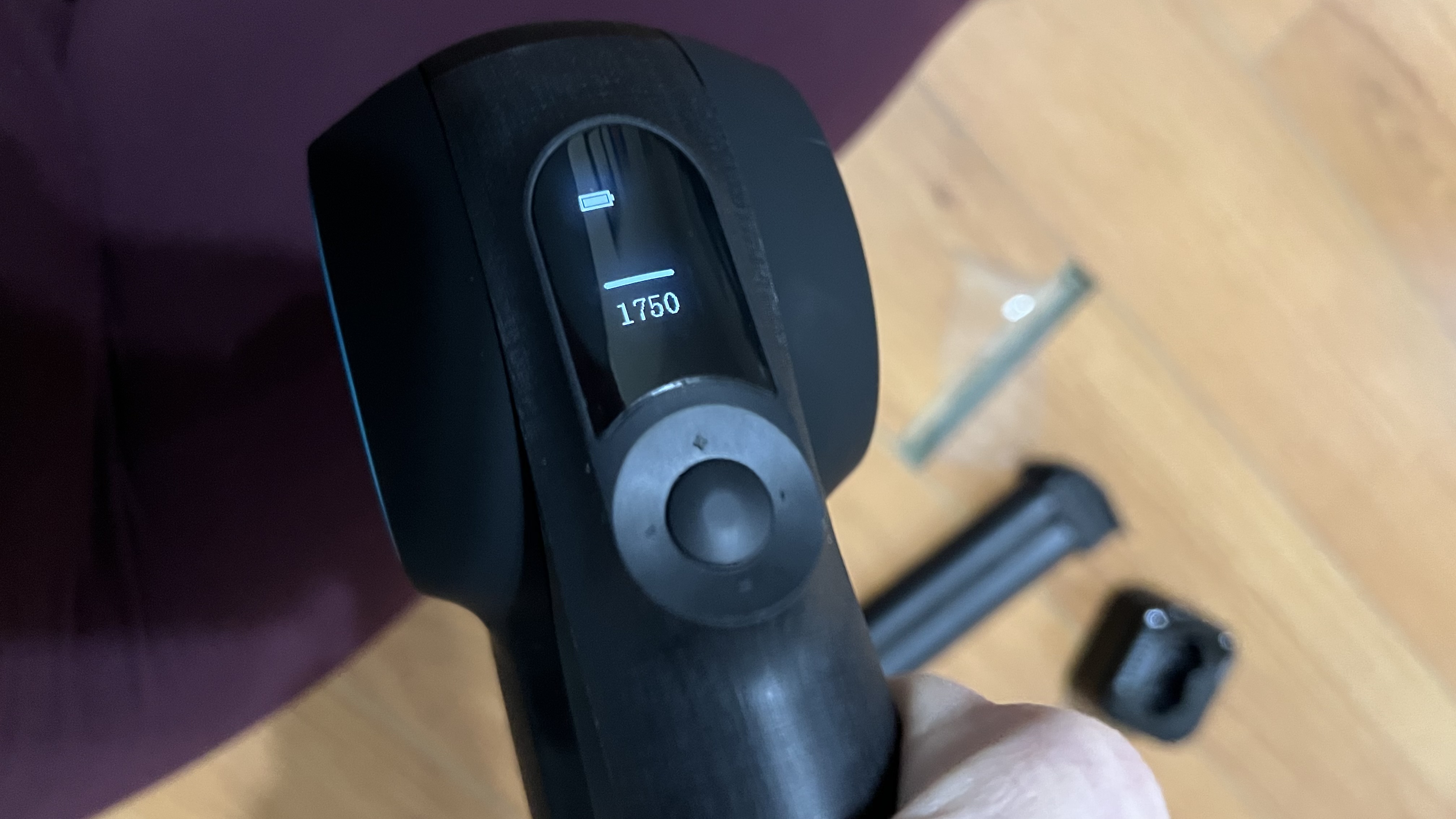
Two interchangeable lithium ion batteries are included with the Theragun Pro, along with a charging dock. Both batteries hold a charge for around 150 minutes, giving the Pro a combined battery life of about five hours without any recharging.
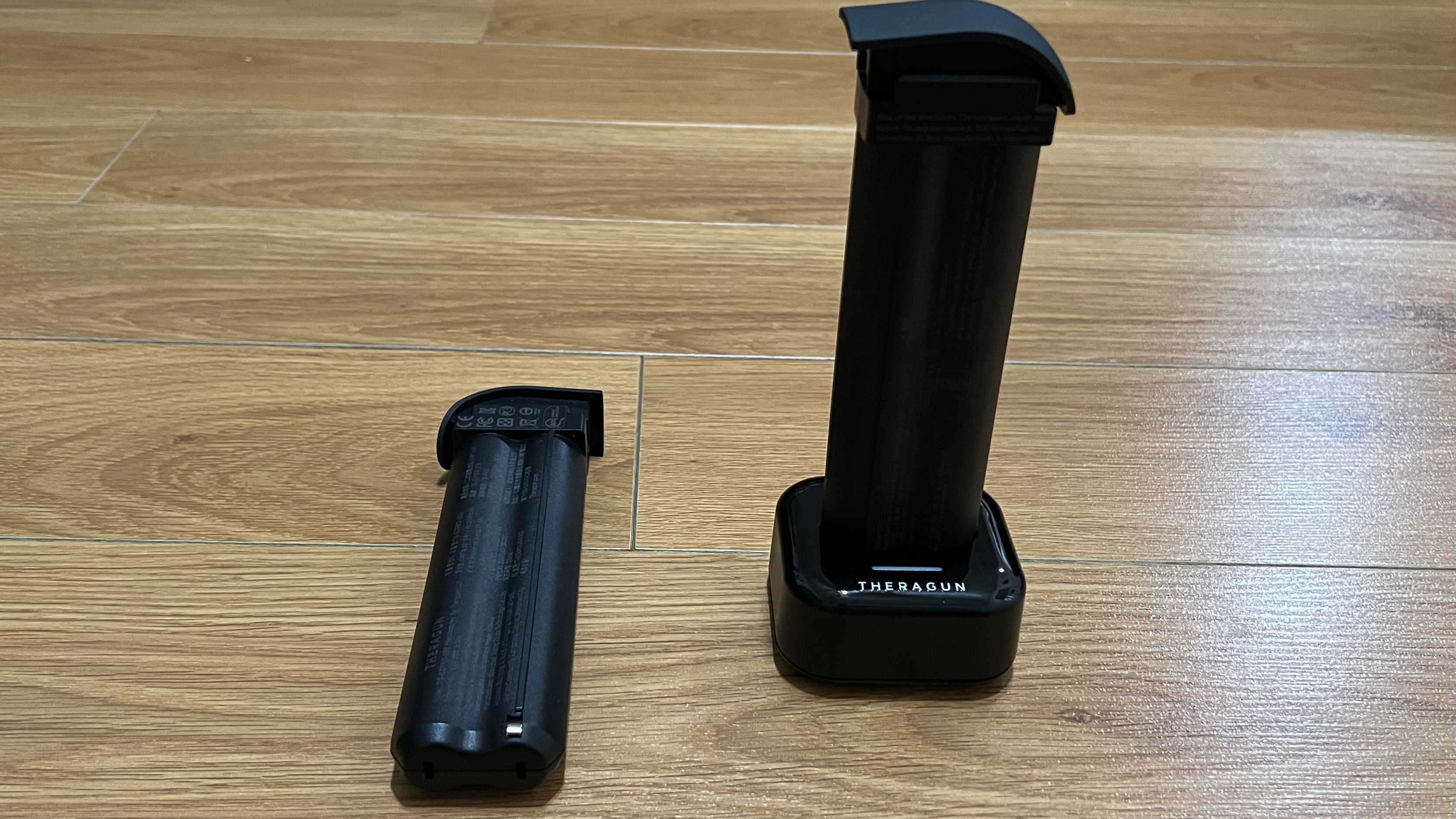
The Pro comes boxed inside of a hard-shell zippered case, with three mesh pockets for incidentals (ostensibly your batteries and charger). The attachments are stored in a separate zippered pouch that can be tossed inside the larger case without a problem. It's a bulky way to store and transport your Pro, but it’s also appropriately protective. I’d rather carry around a big case than have a damaged $600 massage gun.
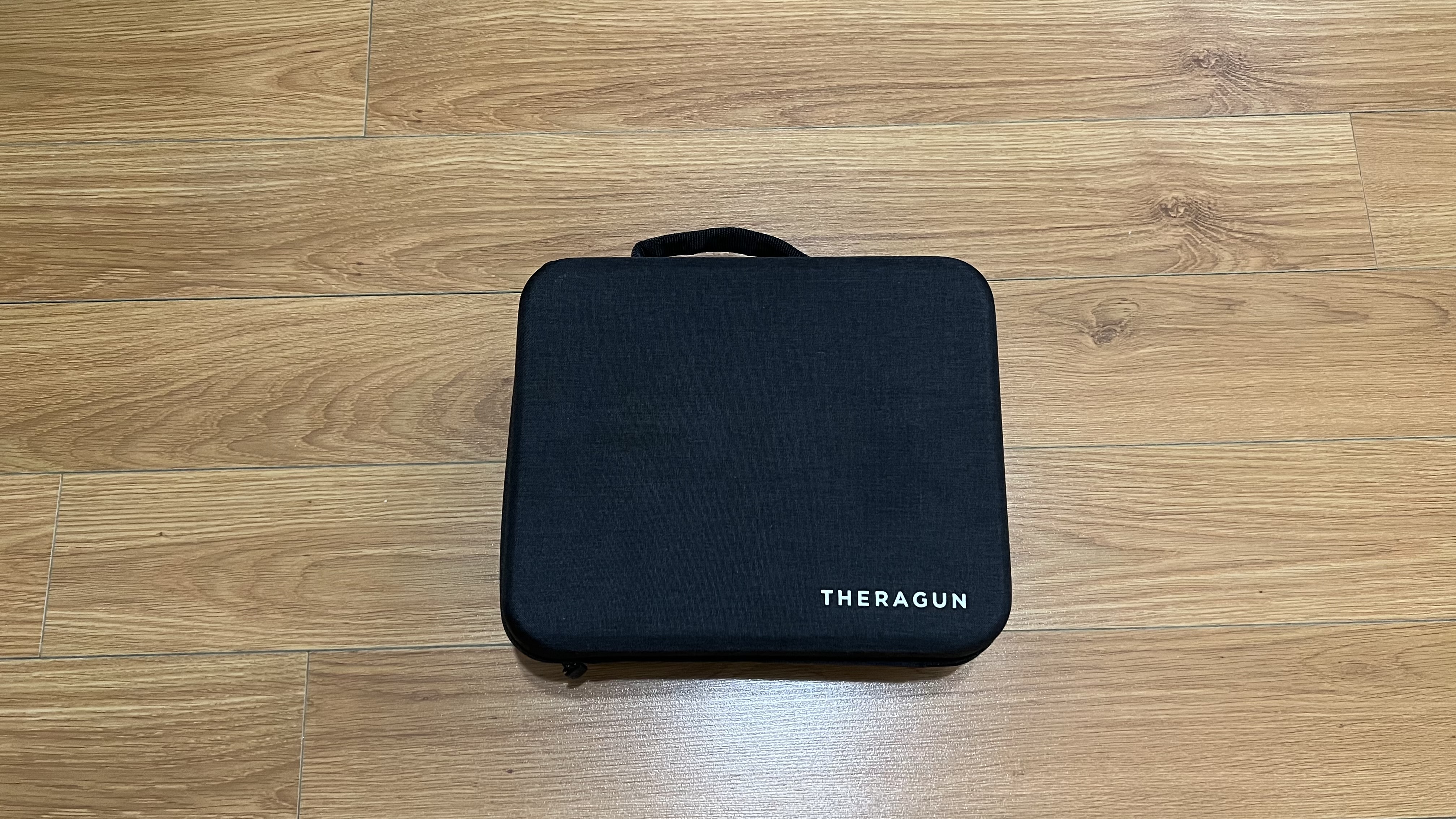
Theragun Pro Review: Attachments
There are six attachments that come standard with the Theragun Pro: A “Dampener” for use on tender areas or near bones; a “Standard Ball” for general use; a “Wedge” to use for scraping or flushing motions; a “Thumb” for the lower back and trigger points, a “Cone” for pinpoint muscle treatment; and a “Supersoft” for especially sensitive or delicate areas.
As I went through the process of pairing my Pro to the Therabody App, I noticed there was a “Large Ball” attachment listed that you’d have to purchase separately. I immediately thought “if I’m paying a third of my rent for a massage gun, shouldn’t it come with all the attachments?” Taking a closer look at the Large Ball revealed that it’s pretty similar to the Dampener, so you could definitely get away with not having it in your arsenal. Still, with the Pro’s price being what it is, it would be nice if it came with every available attachment.
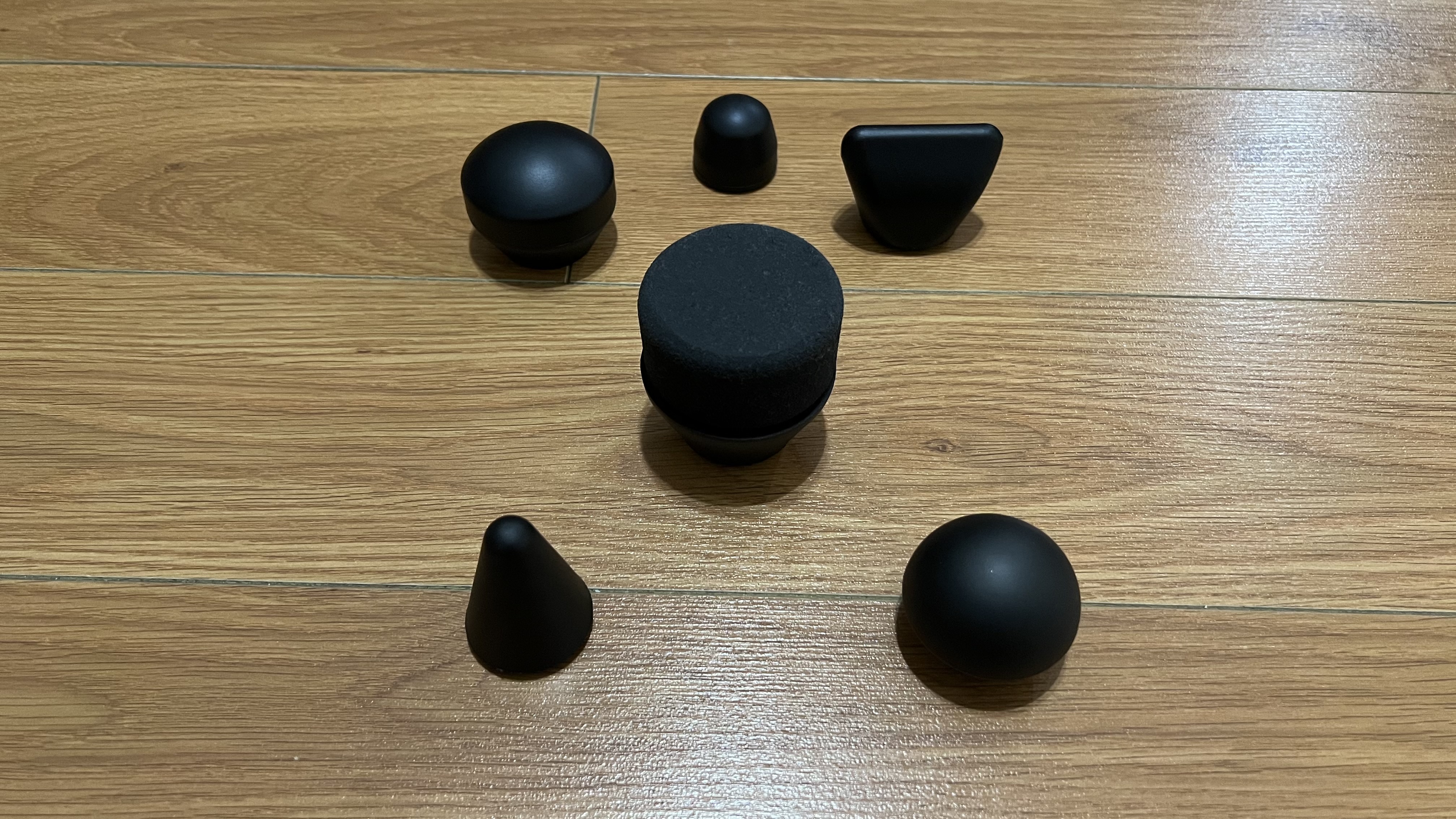
Among all the massage guns I’ve tested, Theraguns have the best attachments by far. Instead of hard plastic that many manufacturers use, most of Theragun’s attachments are made from a non-porous closed-cell foam. This makes for a far more tolerable treatment that still yields results.
Even with the closed-cell foam, the Cone and Thumb attachments proved to be a little too intense for me, at least for any type of extended use. I did get some mileage out of the Thumb for an especially tight TFL (muscle in the outer hip), and the Cone helped to relieve tension in my feet after breaking in some new running shoes. The Wedge was great for treating my lateral quads, which tend to tighten up and aggravate my IT Band Syndrome (overuse injury affecting the knee).
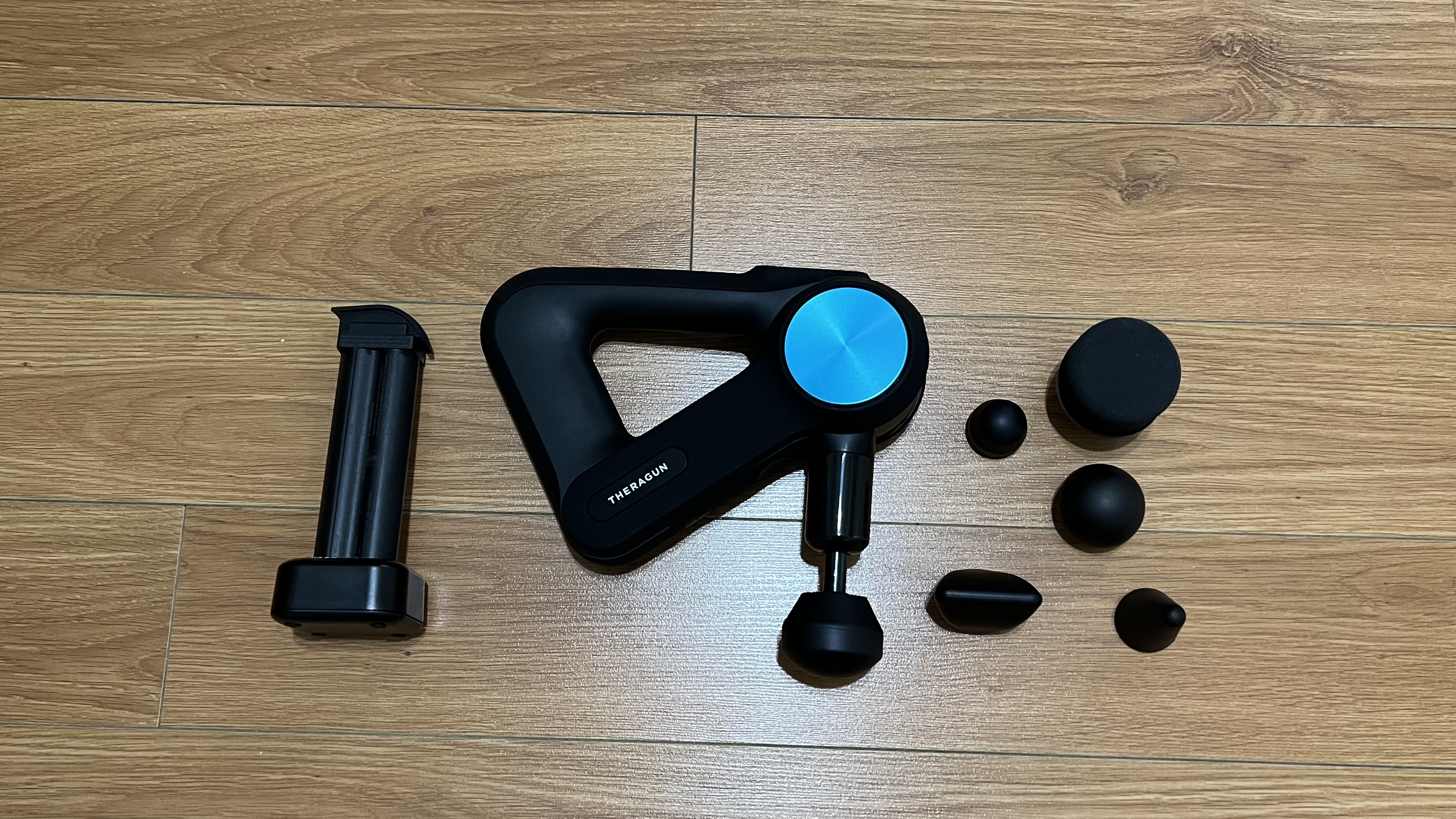
I was very curious to try the Supersoft attachment, made from a cushier open-cell foam. It might be hard to imagine that the Supersoft could be capable of anything beyond a gentle tapping — its pillowy texture seems very comfy, if not super effective. But when popped on to the powerful Theragun Pro, it can provide some incredible relief for areas too tender to treat normally. For me, that area is my calves. The Supersoft attachment was perfect for these sensitive muscles, and actually provided a lot more release than I was expecting.
All that said, I got the most usage out of the Dampener and Standard Ball. Both are excellent catch-alls that can be used almost anywhere on your body.
Theragun Pro Review: Performance
Turning on the Theragun Pro for the first time felt like I was at the helm of a small jet — the brushless QX150 motor provides incredible power for a handheld device. It was almost like the Pro was moving itself over my muscle tissue, as opposed to me putting any force behind it.
Speaking of force, Theragun claims that the Pro has a stall force threshold of 60 pounds. I’ll have to assume that’s true, because I put as much pressure on the gun as I could without totally decimating my quads. The Pro didn’t even slow down, much less stall. In fact, I think it might have laughed at me.
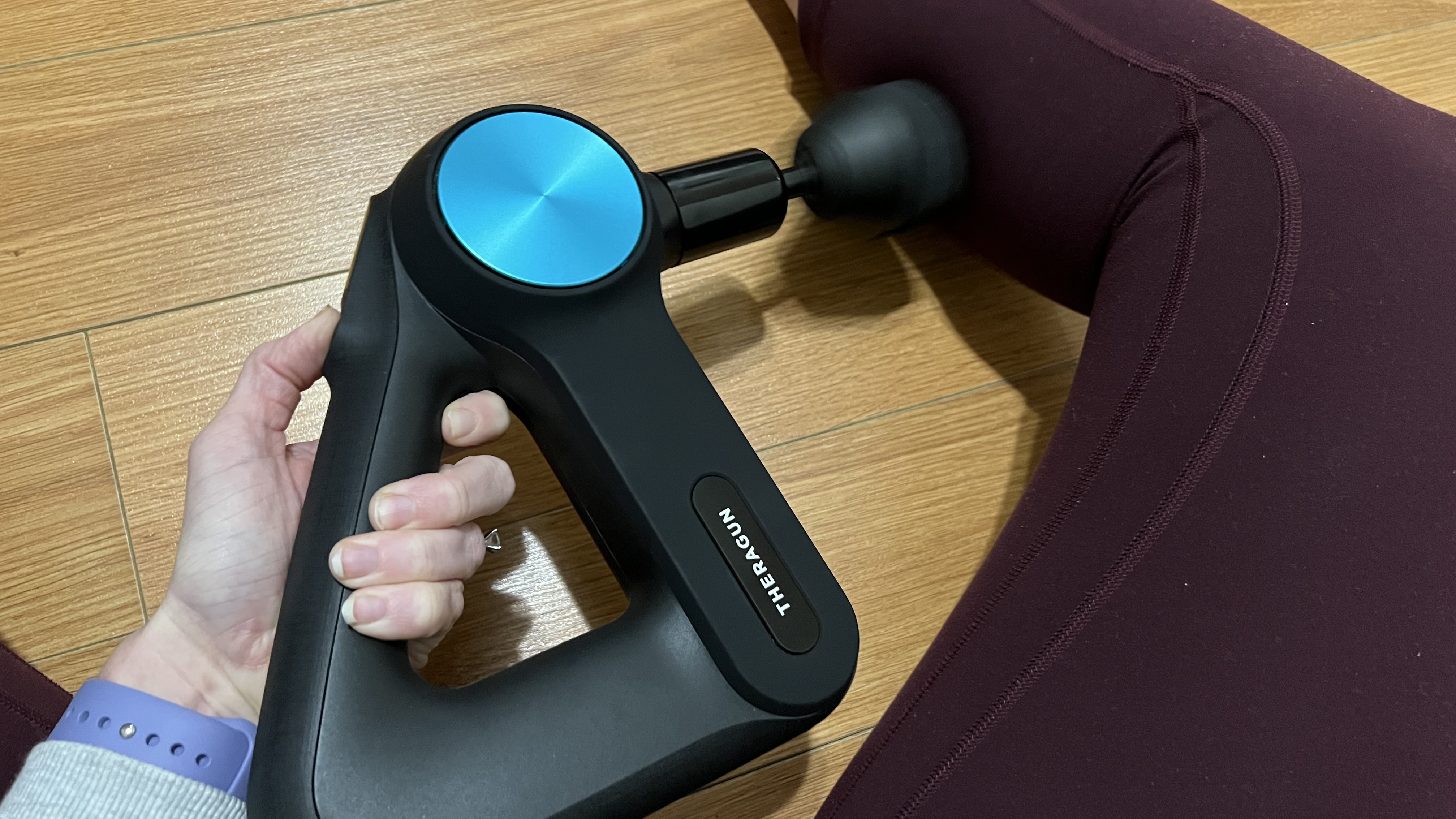
With a longer-than-average 16mm amplitude (the distance that the attachment and shaft travel into your muscle), the Pro is capable of delivering one of the deepest massages you’ll find outside of human hands. The Theragun Elite and Prime also feature a 16mm amplitude, but their stall force thresholds are considerably lighter (40 and 30 pounds respectively). The only other gun on our list that could possibly hold a candle to the Pro’s power is the Hyperice Hypervolt 2 Pro. But even then, you’re comparing the Hypervolt’s 14mm amplitude and 35 pound stall force with the Theragun Pro’s stats. There’s no question — the Theragun Pro wins in a landslide.
All that power comes at a cost though, and the price you pay (outside of your credit card bill), is noise production. During testing, the Pro got as loud as 77 decibels, but usually ranged between 65 and 70 decibels. That’s louder than most massage guns, which typically stay at or below 70 decibels even at their highest setting. It’s a trade-off.
At first, I wasn’t a huge fan of the Pro’s interchangeable battery system. Shouldn’t a $600 gun be able to hold a five hour charge with one battery? It’s true that having to lug around two battery packs and a charging dock will weigh down your case, and that should be taken into consideration if you plan on traveling frequently with your Pro. However, the huge benefit to this system is that you never have to worry about running out of power. Charge one battery while the other is in use, and you essentially create endless battery life. Plus, the charge time for each pack was a quick 75 minutes. That seems like a blink of an eye when compared to the Sportneer Elite D9’s three to five hour charge time.
Theragun Pro Review: Therabody App
If you’re considering the Theragun Pro, chances are this isn’t your first massage gun rodeo. You probably have a pretty decent understanding of how and where to use your gun, and may have a solid regimen already in place. Even with all the knowledge in the world, the Therabody App can still prove incredibly useful.
Pair your Theragun Pro to the Therabody app via Bluetooth and you’re met with an extensive library of programs and routines. Go one step further and allow the app to access your health data, and you’ll get personalized recommendations for warm-up, recovery, and wellness protocols.

Once selecting a routine, the app will guide you through each step with clearly marked diagrams, written directions, a countdown clock, and an in-app force meter that indicates when you’re placing an optimal amount of pressure onto the gun. Several routines integrate stretches to further aid in recovery and mobility training. No need to set your gun to the right speed — the app does it for you.
The Therabody app is a gamechanger for novice users, who may not know the first thing about how to properly use a massage gun. But for more advanced users, it can provide accountability and variety. As someone who exercises intensely every week, I know I can sometimes let my recovery fall by the wayside. Having a specific routine to follow that tells me if I’m being wimpy with my pressure is very helpful, and vastly improves the quality of my workouts.
Theragun Pro Review: Verdict
Yes, the Theragun Pro is expensive. But when you take a look at all specs — a 16mm amplitude, a 60 pound stall force, a powerful motor, a moveable attachment arm, basically endless battery life, high-quality attachments — the price starts to make a little more sense.
However, unless you’re a professional athlete (or at least a very serious recreational one), investing in a Theragun Pro would be the equivalent of buying a Maserati when the only place you ever drive to is the grocery store. Will it get the job done? Absolutely. Could a cheaper model do the job just as well? More than likely yes, although it wouldn’t elicit as many jealous stares.

Jennifer Rizzuto is a freelance writer and certified personal trainer based in Long Island, NY. She covers various fitness-related topics and reviews for Tom's Guide. She also writes sketch comedy and short films, and performs frequently as an actor, singer, and improviser. When she's not writing, working out, or performing, you'll find her trying to convince her husband to get a dog.
